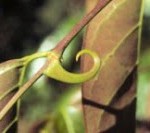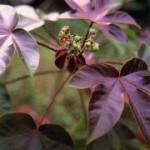Explore Articles Filed Under: Indigenous Culture

My teacher don Roberto Acho knows hundreds of plants, at least in the sense that he is familiar with that many, in the same way that a biomedical physician probably knows hundreds of medicines. I think most shamans — like most biomedical physicians — regularly use a few dozen plant medicines in their everyday routine practice, and go outside that number only in difficult cases, perhaps after consultation with a specialist. Even so, I have often wondered how a shaman remembers all those plants.
On March 9, 2003, Chief Arvol Looking Horse, 19th Generation Keeper of the Sacred White Buffalo Calf Pipe, issued a statement after a meeting in Eagle Butte, South Dakota, with spiritual leaders and bundle keepers of the Lakota, Arapaho, Cheyenne, and other Northern Plains nations. That statement, entitled Protection of Ceremonies O-mini-c’i-ya-pi, cited “indecent mockery, mixing of new age beliefs, charging for ceremonies, and death, which was never heard of before in our ancient ceremonial history,” and set forth Looking Horse’s decision that, from that date onward, no non-Indians would be permitted to participate in any of the Lakota Seven Sacred Rites, including the sundance, sweat lodge, and vision quest.

Among Amazonian mestizos, the term saladera refers to a persistent run of bad luck and misfortune — in family matters, business, and human relationships — often accompanied by great anxiety. This sickness is parallel to the Mexican sacalio, and it is treated the same way: by bathing.

Isuma Independent Inuit Film — the word isuma means to think in Inuktitut — produced The Fast Runner (Atanarjuat) in 2000. Acted entirely by Inuit people, with dialogue in their native language, the film was a retelling of an ancient Inuit story of jealousy and murder: propelled by a primordial patricide, an evil spirit entered into a tiny Inuit community, manifest as the bitterness, jealousy, and murderous rage of the leader and his son.
Ayahuasquero don Juan Tangoa Paima claims that he can heal cancer, AIDS, epilepsy, heart disease, stomach and intestinal conditions, sexually transmitted diseases, depression, drug addiction, mental disorders, migraines, anxiety, and obesity — indeed, he offers the “complete and total healing of any and all afflictions.” Now, these are staggering claims.

The temperature in the jungle remains pretty steady at around 85 degrees and the relative humidity at about 90 percent. You can certainly walk around the jungle naked without discomfort, at least from the weather. Still, the jungle is pretty much filled with insects and sharp objects, and many indigenous people wear clothing of one sort or another. In the Upper Amazon, the traditional dress of a number of indigenous peoples — the Matsigenka, Asháninka, Yine, Conibo, Cashibo — is the cushma.
There has been very little research on sexual relations between shamans and plant spirits. Certainly the spirits can be muy celosa, very jealous, about sexual relations between shamans and human persons. Relations with the spirits may imply both sexual abstinence with humans and sexual alliance with the spirits. There are reports of erotic ayahuasca visions; regular ayahuasca use apparently does nothing to abate — and, by report, may significantly enhance — sexual desire and performance.
Before thinking about the thorny question of how shamans heal, it is worth posing a logically prior question: do they heal? There are remarkably few data on this question. In particular, even moderately long-term follow-up is lacking. As anthropologist and medical doctor Gilbert Lewis puts it, “It is rare to find examples of anthropologists who record the frequency of therapeutic failures, do follow ups, or find out how many people do not bother to come back next time to the shaman.”

Discussing the article:
Hallucinogens in Africa